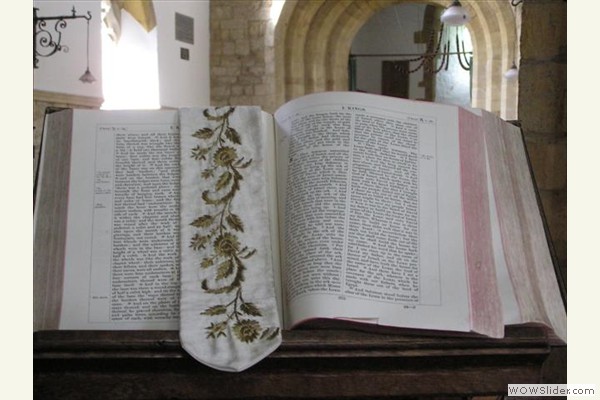
An Exposition Of the Epistles Of Saint Paul And Of The Catholic Epistles Volumes 1&2
THE SECOND EPISTLE OF ST. PETER
Introduction
CANONICITY OF.—We are informed by Origen (in Explicatione 1 mi Psalmi); by Eusebius (libro 3tio, c. 3 and 19, and libro 6to, c. 19, Hist. Eccles.); and by St. Jerome (in Catalogo), that the Canonicity or Divine authority of this Epistle was at first called in question by some persons. The question of its Divine authority, as well as of its authenticity, was raised, St. Jerome informs us, in consequence of the difference, or dissimilarity of style, observable between it, particularly in the second chapter, and the first Epistle. But this difficulty is answered by St. Jerome himself (Ep. ad Hedibiam, quest. 11), by attributing the difference of style to the different scribes, whom the Apostle was obliged to employ in both cases. St. Mark had been employed by him, as scribe, in penning the first Epistle (chap. 5 verse 13); Glaucias acted in the same capacity, in reference to this, as we are assured by St. Clement (lib. 7, Strom.) According, then, to the opinion of St. Jerome, the Apostle dictated this Epistle in Hebrew; but, his scribes, in penning them in Greek, each followed his own peculiar mode of writing; and hence, the diversity of style. It may be, also, said in reply to the difficulty arising from the difference of style in the two Epistles, that the difference of the subjects and matter treated of in both, accounts for the diversity of style. One and the same person, in treating of different subjects, even under the influence of inspiration, may employ a different style in each. Of this, the diversity of style, which marks the Epistle of St. Paul to the Hebrews, and his other Epistles, furnishes a clear illustration. The strong feelings of holy indignation and burning zeal, with which the heart of the Prince of the Apostles was filled, in denouncing the heretics of the day, have, doubtless, altered the meekness of his tone, and the usual character of his style in this Epistle.
Others maintain, that there is no difference of style at all observable in both Epistles. The subject matter of both is quite different; but, the style, the same. This latter opinion is held by the Centuriators of Magdeburg.
It is now a point of Catholic faith, that this Epistle of St. Peter is Canonical or divinely inspired. This has been defined in the Council of Trent (SS. 4 Decretum de Canonicis Scripturis). All the ancient Councils, in which catalogues of the books of Scripture were drawn up, place this second Epistle of St. Peter amongst them, viz.:—the Council of Laodicea, the third of Carthage, the Council of Florence, and, finally, the Council of Trent. The Holy Fathers also, who have drawn up catalogues of the inspired books, reckon this among the number, viz.: Athanasius (in Synopsi); Augustine (de doctrina Christiana, c. viii.); Innocent I. (Ep. 3, ad Exuperium); Gelasius I., in the Council of Seventy Bishops; Origen (Homilia 7, in Jos); and St. Jerome, in many parts of his writings. The objection against its Canonicity founded on the circumstance of its not being found in the Syriac edition of the Scriptures, has very little weight. For, the Syriac Fathers, Ephrem and John Damascene, quoted from the Greek version of it, as inspired; and the latter Father placed it on the catalogue of Sacred Scripture. The objection would militate equally against the Second and Third Epistles, and the Apocalypse of St. John, and the Epistle of St. Jude; for, they too are wanting in the Syriac version.
OBJECT AND OCCASION OF.—The object, or design, of the Apostle in this Epistle was, to put the faithful on their guard against the errors of false teachers (3:17), generally supposed to be the Gnostics, who were soon to spring forth, or, more probably against the followers of Simon Magus, or the Simonites, who were the forerunners of the Gnostics. The more effectually to attain its object, the Apostle first points out the greatness of the promised blessings which the gratuitous bounty of God had in store for them, of which he had already given them so many pledges in this life and the sure grounds upon which these promises were founded. Such were the unspeakable blessings of which the false teachers wished to deprive them (chap. 1). He, next, employs the strong language of indignant denunciation, as head of Christ’s Church, while describing the infamous and depraved morals of these pretended reformers, also permitted and sanctioned by them, in their deluded followers; he vividly describes the punishment that awaits them (chap. 2). Finally, he refers to one leading error of these impious scoffers, regarding the coming of CHRIST to judgment, and the end of all things; this error he refutes, and after explaining the final dissolution of all things, he draws the moral conclusions, of which the subject itself is naturally suggestive (chap. 3).
WHEN AND WHERE WRITTEN.—It was written, probably, about the year 66, shortly before his martyrdom (chap. 1 verse 14), which occurred about the 35th year after our Lord’s Ascension. It is his last dying legacy and monument of burning zeal for the faithful, over whom he was constituted by Christ, as chief pastor (1:12, 13, 14). It was addressed to those to whom he had directed his former Epistle (3:1). And, it is generally agreed, that it was written from Rome, where the Apostle suffered under Nero, in the year 68. By some, it is asserted, that a considerable interval—twenty years, or upwards—intervened between it and the first Epistle. This is the opinion of those, who refer the date of the former Epistle to the year 45.
Copyright ©1999-2023 Wildfire Fellowship, Inc all rights reserved

 Keep Site Running
Keep Site Running